How to prune remontant raspberries?
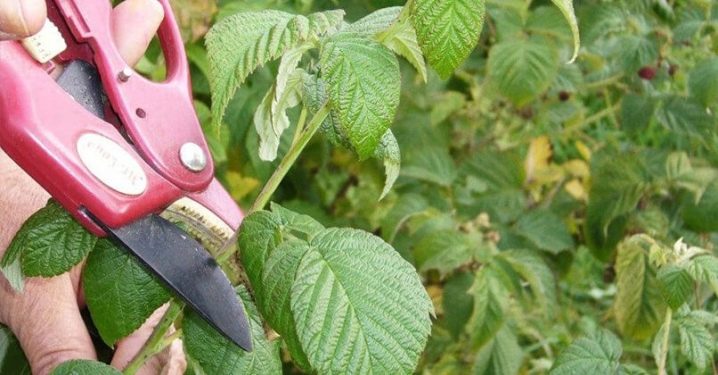
Remontant raspberry bushes attract many summer residents by the fact that they allow you to feast on delicious berries almost all summer. When the traditional varieties have already finished bearing fruit, the remontant ones sometimes continue until the first frost. To make the harvest happy every year, any raspberry requires proper care, which necessarily includes pruning.
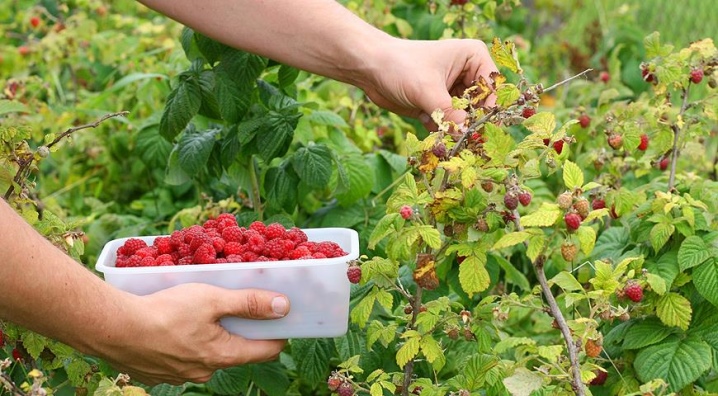
The need for a procedure
If the raspberry bushes are not trimmed annually, they become too thick and at times resemble currants. As a result, the yield drops sharply. Shoots that are old and more than two years old will create excessive density. This, in turn, will lead to the rapid development of various diseases and the appearance of pests.
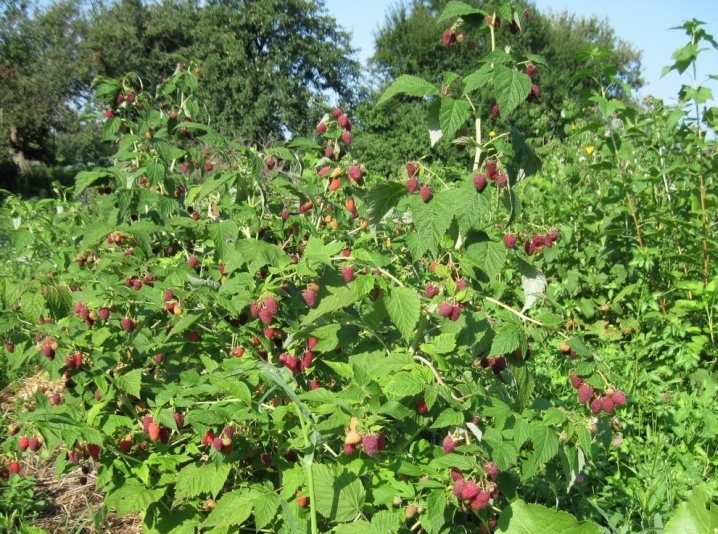
If you do not cut out the extra branches, then new shoots will be weak or completely absent. In addition, the berries become smaller, or fruiting completely stops. Thus, pruning remontant raspberries is a must.
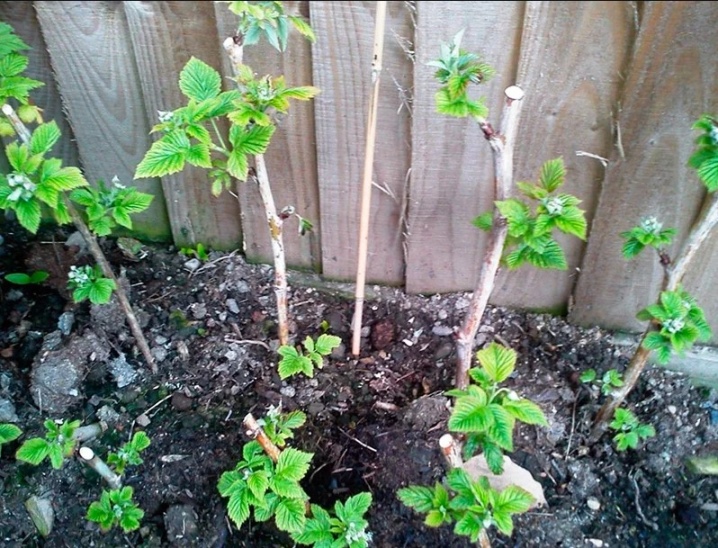
It is worth noting that varieties that bear fruit for a long period are no different from others when removing unnecessary branches. These raspberries also need different pruning.
-
In order for the bush to be viable, a rejuvenating procedure is performed. It means the removal of shoots more than 2 years old, as well as annuals that have already borne fruit.
-
If necessary, to remove broken, dry and diseased branches, sanitary pruning should be carried out.
-
Thinning cutting is carried out periodically. This removes young growth, as well as weak shoots.
Ideally, 6 to 8 healthy trunks should remain on the bush.
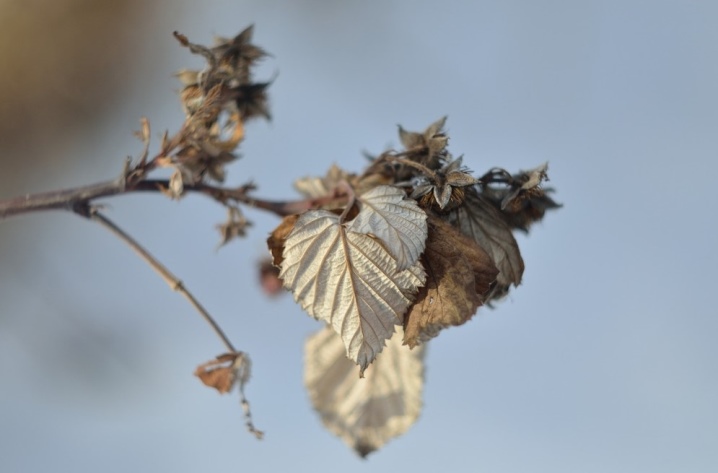
If you do not carry out timely pruning and cleaning of raspberries, then they will grow excessively quickly. As a result, nutrients from the soil will be spent on the development of roots and crown. In addition, unkempt raspberry bushes can become real thickets, in which there will be difficulties with harvesting. It can also cause trampling of good branches that bear fruit.

Timing
It is recommended to trim the raspberries 2-3 times a year. It is important to take into account the varieties, as well as climatic conditions. For example, in the northern regions, raspberries are thinned out in the spring months, and in the southern ones - in the autumn.
Based on the characteristics of the climate, pruning for the purpose of rejuvenation in the autumn should be carried out at the following time.
-
In regions with mild and warm weather, October and November are considered optimal.
-
For the middle lane, the best time is the end of September.
-
The harsh climate of the north shifts pruning dates to late summer or early autumn.
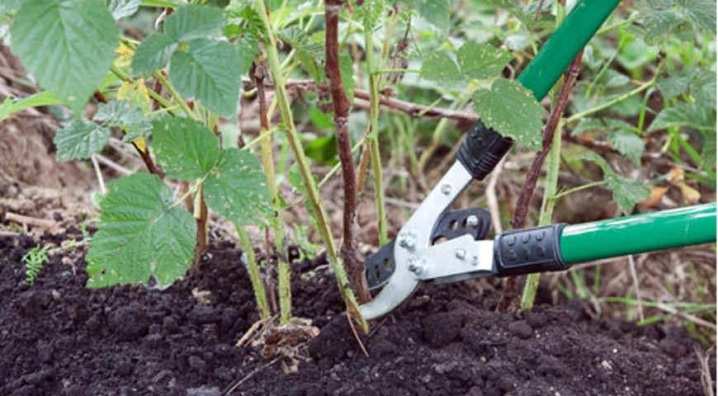
It is worth noting that if it was not possible to clear the bushes from everything superfluous until the first snowy days, then there is nothing to worry about.
Raspberry pruning can be done even if snow has already fallen.
It is important to take into account that in some southern regions, branches on remontant varieties have to be removed in late autumn or early winter. This is necessary so that temperatures above freezing do not contribute to the growth of underground buds. For example, in Crimea, the winter months are excessively warm, and the anti-aging procedure is not carried out in the fall, transferring it to the spring months. The branches on which the buds have hatched are cut almost to the ground. As a result, the bushes release new ones that develop rapidly.
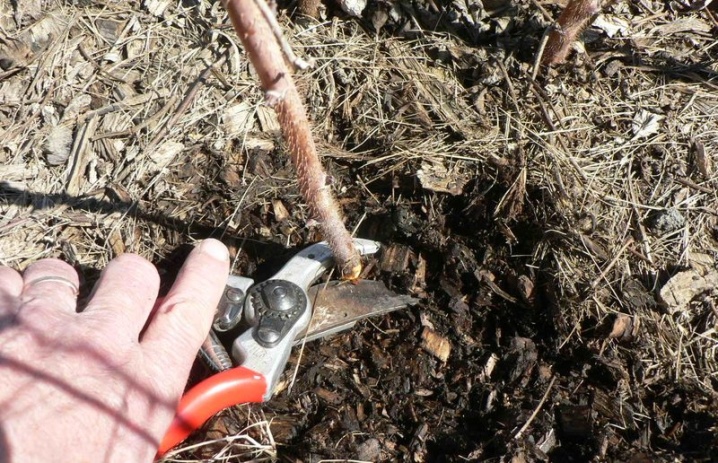
As for sanitary pruning, it can be done throughout the growing season.To do this, it is enough to find shoots affected by disease or pests.
Regular pruning for the purpose of thinning should be done depending on the region where remontant raspberries are grown. When receiving two harvests, it is worth adhering to the following deadlines.
-
In the Krasnodar Territory, the Black Earth Region, in the south of Siberia, the Southern Urals and the Far East order in raspberries should be restored only with the arrival of autumn.
-
In Siberia, in the Northern Urals, as well as in the north-west of Russia and in the middle lane, thinning is recommended in the spring, so that the bushes winter better. In snowy places, such dense raspberry forests help to retain snow. However, if there is little rainfall, then the bushes should be covered for the winter.

If you want to get one crop from remontant varieties, the bushes are cleared of overgrowth throughout the season. Before winter, the raspberry tree is completely mowed, and in the spring it will give new shoots. In this case, the last months of spring, when the strongest branches are visible, are best suited for thinning. This option is applicable in the Moscow region. Although sometimes for the winter you have to leave new growth and additionally carry out mulching.
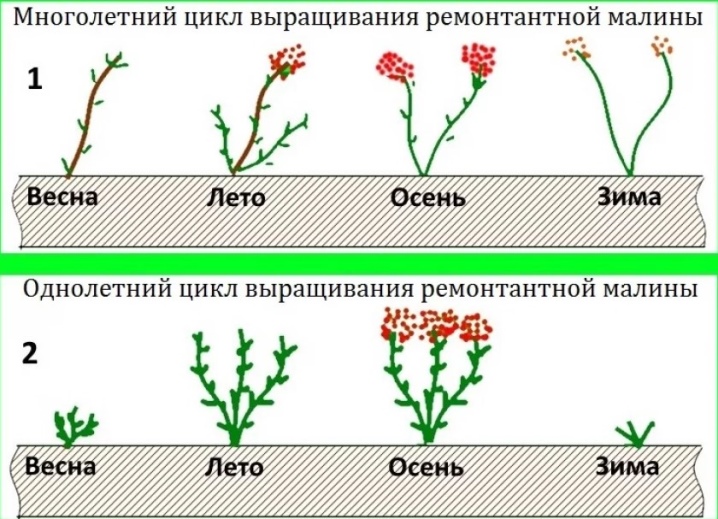
Preparation
Although the procedure for pruning raspberry bushes can be carried out at different times, it will require the same tools. Everything you need to work with bushes should be prepared in advance.
-
Sharp secateurs directly for shoot removal.
-
Alcohol solution or any other substance intended for disinfection. They are used to process the instrument to prevent the spread of diseases.
-
Gloves made of dense material will protect your hands when working with varieties that have spikes.
-
A container where you can collect pruned branches.
-
Fungicide to treat cuttings on branches that have been infested or damaged by pests.
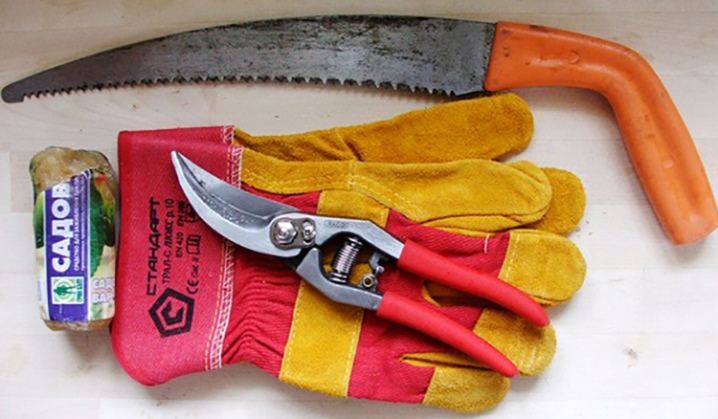
Cutting technology
You can get the maximum yield from remontant bushes when pruning if you remove most of the shoots. In this case, it will consist of large berries. If you properly cut the tops on annual branches one meter or more in height, then the number of shoots on the sides will increase, and as a result, the number of berries will also increase.
This will increase the duration of fruiting, although it will come a little later.

In autumn
Cutting off excess branches on the bushes in the fall, after they have ceased to bear fruit, should be done with a rejuvenating purpose. However, this is important to do when there are no more leaves on the shoots. While the process of photosynthesis lasts, the raspberry root system receives nutrition, which is important for the plant to winter well.
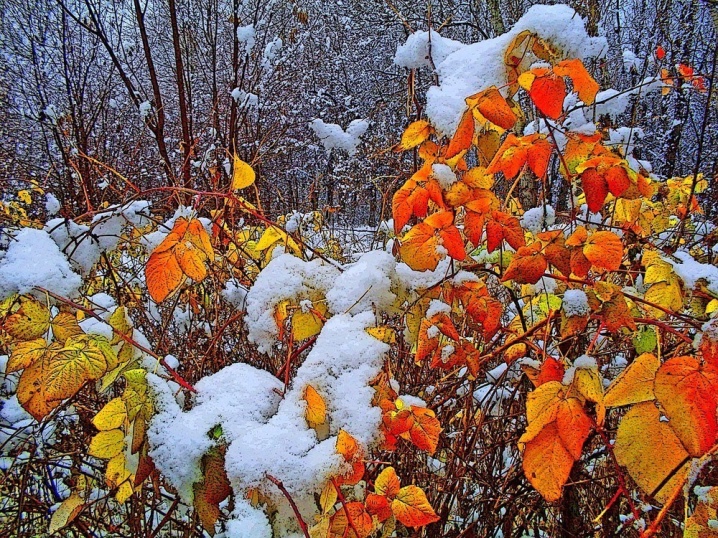
Repaired varieties can produce fruit on shoots in the first and second year, so there are several pruning options in the fall.
- All branches are cut at a distance of 4 cm from the soil surface. In this case, it is important to hold the secateurs so that it is perpendicular to the trunk. This will allow the bush to bear fruit once, but the ripening of the berries will take several months. As for the bushes that were planted directly in the summer, they should be cut 20 centimeters from the ground for better rooting.
This solution is perfect for areas where the fall is short and very cold.
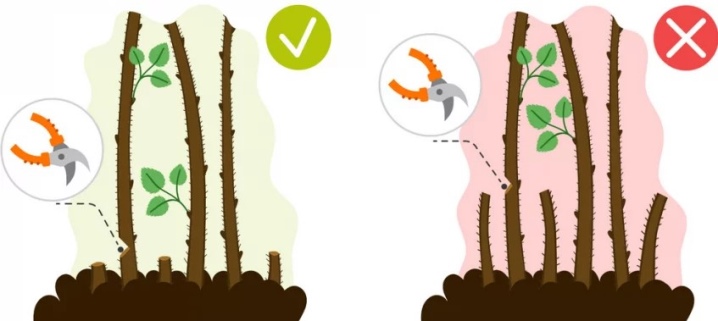
- Shoots that have given up all the fruits are cut at the root. This method is similar to pruning regular raspberries. However, it allows you to reveal all the properties of the remontant variety. As a result, the bushes are able to harvest twice in one summer. Of course, you should not expect that the second time there will be as many fruits as the first. This option is best used in the southern regions, so that the second crop has time to ripen all the way.
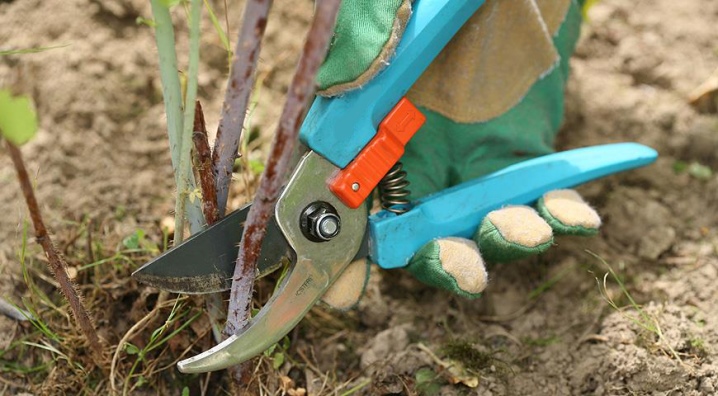
- Bushes that bear mainly two-year-old shoots, but also have an ovary on annuals, should be cut off after the harvest. The procedure is carried out as for traditional varieties, but at the same time there are annual branches that bear fruit. They are cut just before the onset of winter.Often this method is used for semi-renovated varieties.
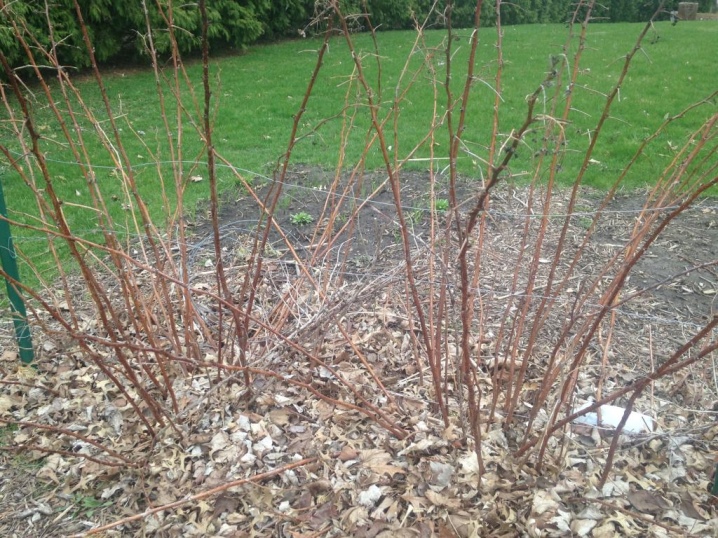
In spring and summer
After the snow has melted and warm spring days are established, a thorough examination of the remontant bushes after wintering should be carried out. Young shoots come from the roots anyway. If traces of diseases are found, then the plants are immediately cut out to the very root. After that, it is important to process the cut with a special tool.
As for healthy shoots, they should be left. As a rule, in the south, when buds appear, old branches are cut right at the root.
When pruning in the spring, remove shoots that are frozen, dry, deformed or weakened. And also it is necessary to remove excess branches so that the plantings do not look thickened.
For the procedure, the period when green growth is formed and buds appear on the old stems is best suited.
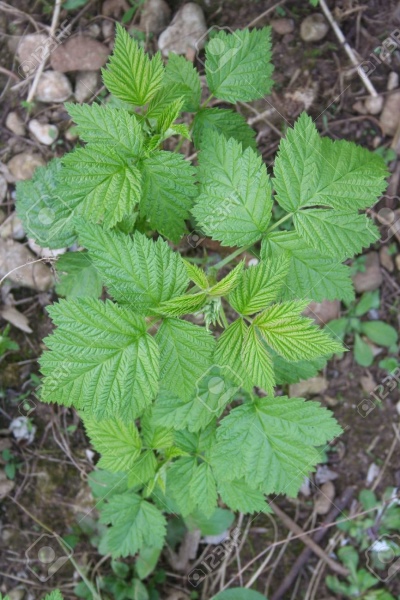
The next pruning is done in 7-10 days. In the course of it, it is necessary to cut off the tops of the young branches. This way the fruiting stems will develop better.
When growing a shrub in a two-year way, when all the shoots have not been removed in the fall, pruning should be done in the summer. This will allow the second fruiting to be made more abundant. The ideal time for this is July, when the first harvest phase ends. Then you can remove all the shoots that have ceased to bear fruit.
In the summer months, when raspberries show active growth, bloom, bear fruit, shoots that are dry or damaged should be cut. Other types of pruning during this period depend on the number of crops per year.
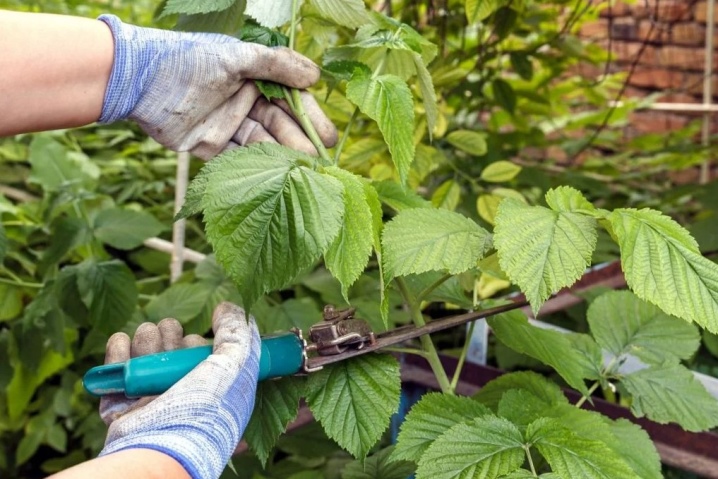
If the autumn is long and warm, then in order to obtain two harvests, it is worth using the scheme in several stages.
-
In the last spring month, when the strongest shoots are clearly visible, 6 to 8 branches are left on the bush. Flowers will appear on them, and later berries.
-
Other shoots should be removed to the ground. As a result, the bush will consist of last year's branches, which will give the first harvest, and young growth.
-
After fruiting in summer stops, you should immediately cut off the tops on the shoots of the last year. This should not be done on young branches.
-
If new growth appears, then it is removed.
-
After collecting the second harvest, the tops are cut off from the branches that have borne fruit. Such shoots remain for fruiting for the next year.
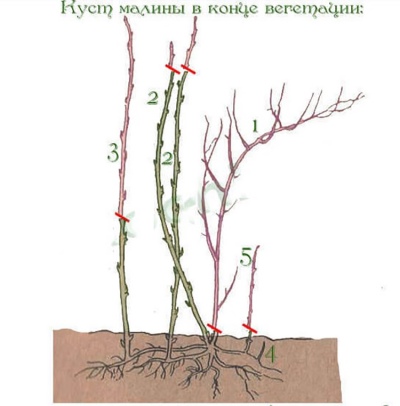
When remontant raspberries are grown for a single crop, excess growth should be removed during the summer months. This will allow the bush to eat normally. In this case, you should not trim the tops, as this will be ineffective.
Follow-up care
After the pruning has been carried out, it is worth mulching the soil around the bushes. Do not loosen the soil around the raspberry so as not to damage the root system lying on the surface. While the warm season lasts, it is important to water the raspberry tree.
Especially often it is worth carrying out this procedure when the berries have appeared.
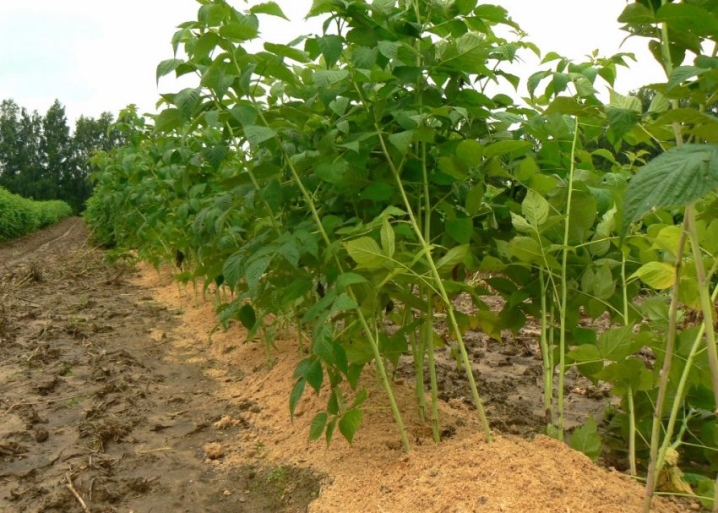
For a good harvest, it is important to carry out top dressing in a timely manner. So, at the beginning of spring, it is best to apply complex types of fertilizers, and during the flowering period and in the autumn months - potassium-phosphorus fertilizers. And also important points are the prevention of diseases and protection from various pests. For example, after pruning, it is advisable to dig up the ground between the rows of raspberries, and then protect the roots using a layer of mulch of 10 centimeters or more. Straw, humus, sawdust, or dry grass work well for mulching.
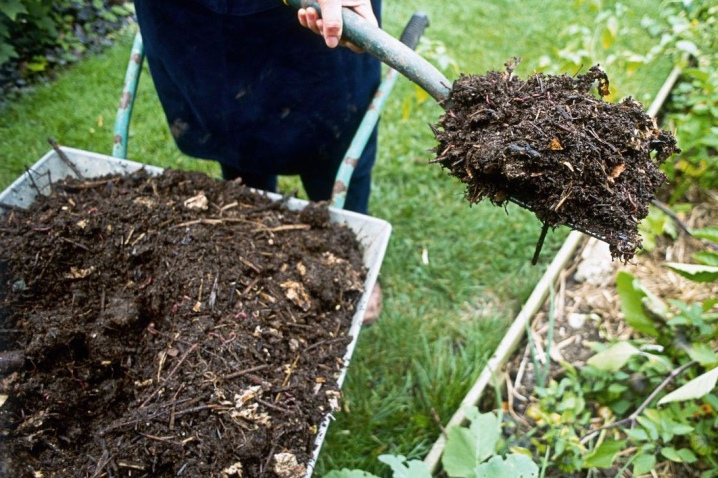
Common mistakes
Gardeners with little experience can make mistakes, some of which are the most common.
-
Removal of branches that have ceased to bear fruit, immediately after picking the berries, but even before frost. Indeed, in case of good warm weather, raspberries can give young shoots. However, they are unlikely to be strong enough before winter. And the bush will have to spend a lot of energy on their growth.
-
Pruning raspberries early before winter, when there are still green leaves on the branches. Do not cut off the shoots before the photosynthesis process is complete.
-
Excessive pruning of raspberry bushes that have just been planted.
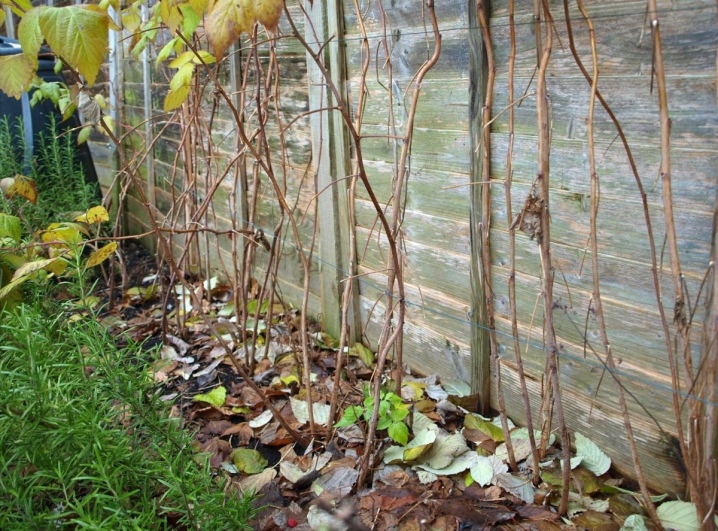
For pruning of remontant varieties to go well, there are a number of tips to follow.
-
When removing excess shoots, leave 8 to 10 branches per square meter of the plot. It should be borne in mind that in the summer months raspberries can grow too much, and as a result, one shoot can give 20 new ones.
-
Branches and foliage that have been cut should be removed, or even better burned. They should not be left underfoot to avoid fungal or pest infestation. Otherwise, the plant may be destroyed.
-
In the event that one shoot gives 6 or more branches, then it is worth removing the extra ones. After all, if the bushes thicken too much, then the yield will decrease.
-
It is necessary to thin out raspberries only with high-quality tools. At the same time, it is important to protect your hands with special gloves so that the thorns do not interfere with your work.












The comment was sent successfully.